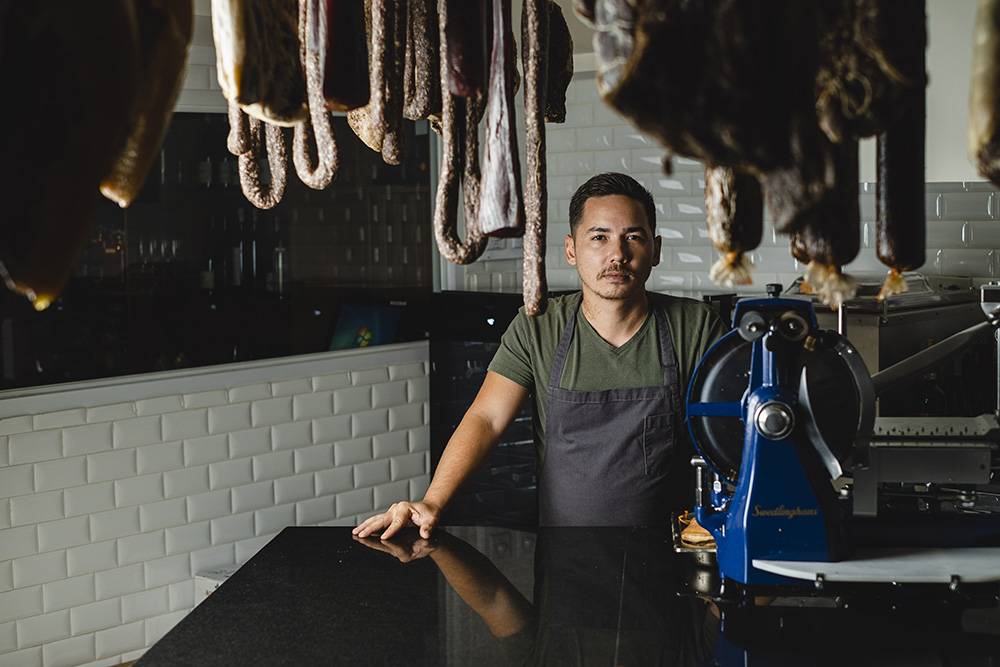While the whole restaurant and F&B industry continues to weather the COVID-19 storm, one segment seems to have undergone the biggest shift in order to survive: fine dining restaurants. Delivery is a game changer and most, if not all, establishments have resorted to this method to serve customers even as their physical stores remain closed or at limited capacity. However, how exactly do you incorporate delivery if your diner’s personal experience is integral to your restaurant’s overall concept?
For instance, at The Test Kitchen, time is considered an ingredient. Dining inside the restaurant is an experience in and of itself, which begs the question: How can they bring in the experience to homes without sacrificing food quality and integrity?
Here, we spoke to chef and owner Josh Boutwood to learn more about his experience in running a fine dining restaurant during these times.
Changing restrictions pose challenges
As the pandemic completely changed the dynamics of operating a foodservice establishment, it’s especially harder for restaurateurs given that planning on a weekly or bi-monthly basis is more exhausting.
“This is most likely the hardest thing we have to deal with,” he says about the changing restrictions and guidelines. “Ideally if we can see a solid plan for our industry that is longer than one month, I feel we would be better off with how we plan and execute any or all restrictions.”
Boutwood feels that this year’s two-week ECQ period was more demanding compared to last year when the initial lockdowns were put in place. “This time around, more establishments are open,” he says. Many restaurants have figured out how to adapt to delivery and takeout despite months of initial resistance. But with more Filipinos working from home and ordering delivery, market share has been affected too.
As of writing, restrictions in the NCR+ bubble have been downgraded to follow MECQ guidelines until Apr. 30.
Creating delivery-friendly menu items
Focusing on delivery and takeout presents itself as another creative opportunity for restaurateurs to somehow mitigate the impact of limited dine-in capacity. This involves crafting special dishes meant only for delivery or even reinventing well-loved food items.
Establishments see the value that delivery can bring: It makes up for reduced foot traffic and helps supplement revenue as dine-in confidence remains bleak. However, the caveat is that delivery may only provide short-term cashflow amid the current situation.
Nonetheless, Boutwood took this same approach, initially only selling breads and fresh pastas at the start of quarantine. “We then created a ready-to-cook line as we were worried that cooked food would deteriorate before it arrived.” He has since expanded his menu offerings to include smoked pork neck steak, black truffle roast chicken and even a 700-gram sous-vide ribeye, complete with sides like creamed spinach, mashed potatoes or roasted caraway carrots. The package comes with a recipe with simple instructions and a QR code that’s linked to a video where you can watch and follow how it’s done.
Although not part of the core menu, Boutwood decided to design a ready-to-eat line, which has become part of their takeout and delivery menu, consisting of dishes that can easily survive transit between destinations. In this menu, you can find elevated rice bowls—from braised beef cheeks and kimchi rice to Norwegian salmon with furikake-dressed rice and wakame and sesame salad—and burgers infused with the Test Kitchen identity (even on their “K-Drama” burger using in-house ground chuck, gochujang sauce and kimchi.
They’ve also created weekend delivery specials and even ventured into desserts with their own micro-batch gelato.
“We have been able to create recipes that are suitable for travel times without losing the integrity and style of the Test Kitchen,” Boutwood says about adapting their fine dining methods. They also ensure that sustainability is still held to a high standard, as they have always done even pre-pandemic. As much as possible, they utilize biodegradable containers and reusable plastic.
Customer-focused fine dining
For Boutwood, becoming a presence in their community is their simple approach to marketing during this period. It’s all about catering to the needs of their guests, putting precedence over food their customers want versus what they want to serve—simple, honest food.
He’s also had to wear multiple hats in order to survive, sharing that he has become the designated delivery person a few times. Although they don’t have an in-house delivery service at the moment, their customers can order through the restaurant—which he, including many others, prefer to minimize commission fees. However, he welcomes using third-party apps as these allow them to reach a broader audience.
Besides these strategies, Boutwood stresses the importance of going above and beyond health protocols. “Anything we do right will ultimately help us get out of this pandemic sooner.”
“We must stay strong and lead with purpose,” he adds, a mantra that anyone can adopt regardless of the industry.





